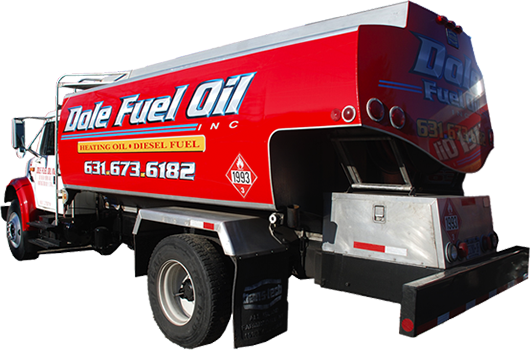Your oil furnace works hard to keep your Long Island home warm, even under the harshest winter conditions. Unlike gas-fired furnaces, an oil-fired furnace relies on its storage tank to provide the fuel oil necessary for operation. Maintaining your oil storage tank isn’t a complicated process, but there are things you should be aware of if you want it to remain in great shape.
Above Ground Oil Tanks
For above ground oil tanks, you have two location options: inside or outside. Above ground oil tanks that are placed outside can be exposed to elements, often out of your control. Environmental factors such as wind, water, snow and debris puts the tank at a higher risk of being damaged.
Above ground oil tanks located inside are not exposed to the elements and hazards as outdoor tanks. Yet, homeowners still need to be aware of potential issues. For example, if the tank is in the garage, residents will need to be extra careful with their car and other tools. Ideally, an above ground tank should be placed in a cool, dry environment, such as an unused basement or utility room.
Preventative maintenance is one of the best ways to extend the operating life of your oil tank. According to the Environmental Protection Agency, heating equipment that is properly maintained uses 13% less fuel than units that are not. If your oil tank is above ground, whether outdoors or inside your basement or garage, inspect it periodically.
Look at the tank, fuel delivery and vent lines, valves, supply and return lines and all the fittings. Check underneath each of these, too, for evidence of oil or rust accumulation that may indicate a leak or malfunction.
Suggested Maintenance for an Above Ground Oil Tank
Above ground oil tanks are easier to inspect than underground oil tanks, simply because they are visible. They require the least amount of maintenance; if a homeowner experiences a problem with an above ground tank, they’ll most likely be aware of it sooner and able to address the problem right away.
Although it’s always best to contact a certified professional for a thorough maintenance check, here are a few suggested maintenance tips you can DIY to get started:
- Examine the tank legs (are they all intact?). Make sure they’re not beginning to rust, buckle or crack.
- Check the tank platform to ensure it isn’t deformed or cracked.
- Look for rust on metal tanks. Check the drain, pipes filter and valves.
- Record usage levels by checking the oil tank gauge as you use up your oil. Also, look at the gauge to make sure it’s not cracked or loosened.
- Protect outdoor tanks from strong winds and falling snow or ice. Trim nearby trees so branches are not likely to fall on the tank and fence off the sides of the tank so lines and filters won’t get run over by a mower.
- Check vents for clogs or corrosion. Make sure they’re not broken or missing.
Buried Oil Tanks
Underground oil tank maintenance is a lot trickier and should be left up to a licensed heating oil professional to evaluate the tank structure and soil condition. This is not a DIY project. There are several signs that your buried oil tank may be compromised; call a professional if you notice any of the following around your tank:
- Plant life in the area of the tank is dying
- Insect infestation
- Soil staining
- Oil consumption seems to be increasing
- Wet spots or oil-slick sheen (like a rainbow) is visible on puddled water near your underground oil tank
- Oil odor in the yard or even in the house
- Cracked or fuel gauge that seems to be stuck
It is recommended that you replace your underground tank with an above-ground tank to allow for easier detection of problems. If your tank is underground, take the following precautions.
- Hire a registered contractor to inspect your tank for leaks at least once a year.
- Empty unused tanks. If your underground tank has not been used for two or more years or you no longer intend to use it, you are legally required to remove it and also remove any contaminated soil.
Replacing an Oil Storage Tank? What You Need to Know
Replacing a fuel oil storage tank is an inevitable part of the maintenance process, especially if the old tank is subject to rust and severe leaks. Here are some important things you need to know about replacing your tank.
Avoid tanks that are used or refurbished. A used or reconditioned tank has almost always been pulled out of service due to leaks or age. Reusing an old tank could cause a wide range of problems that often prove expensive to fix.
If you do decide to replace the tank, avoid transferring the leftover oil that’s in the old tank into your new tank. The old fuel oil may contain a mixture of acids, microorganisms and other contaminants picked up from the old tank that could cause the new tank to corrode over time. Old tanks also contain water and sludge that could easily be shared during the transfer process.
If properly maintained, your home heating oil storage tank will last a long time. While there is no definitive time frame for heating oil tank replacement, a yearly visual inspection is strongly recommended to avoid problems that could potentially shorten your tank’s lifespan. Inspecting your above ground oil tank or below ground tank site at the beginning and end of the heating season is a good habit to develop.
If you do suspect an oil leak or spill, immediately contact Dole Fuel Oil and/or your local fire department for assistance. Our expert professionals are here to help you with all your home heating oil questions. Call us at 631-673-6182 for all of your fuel oil needs.


